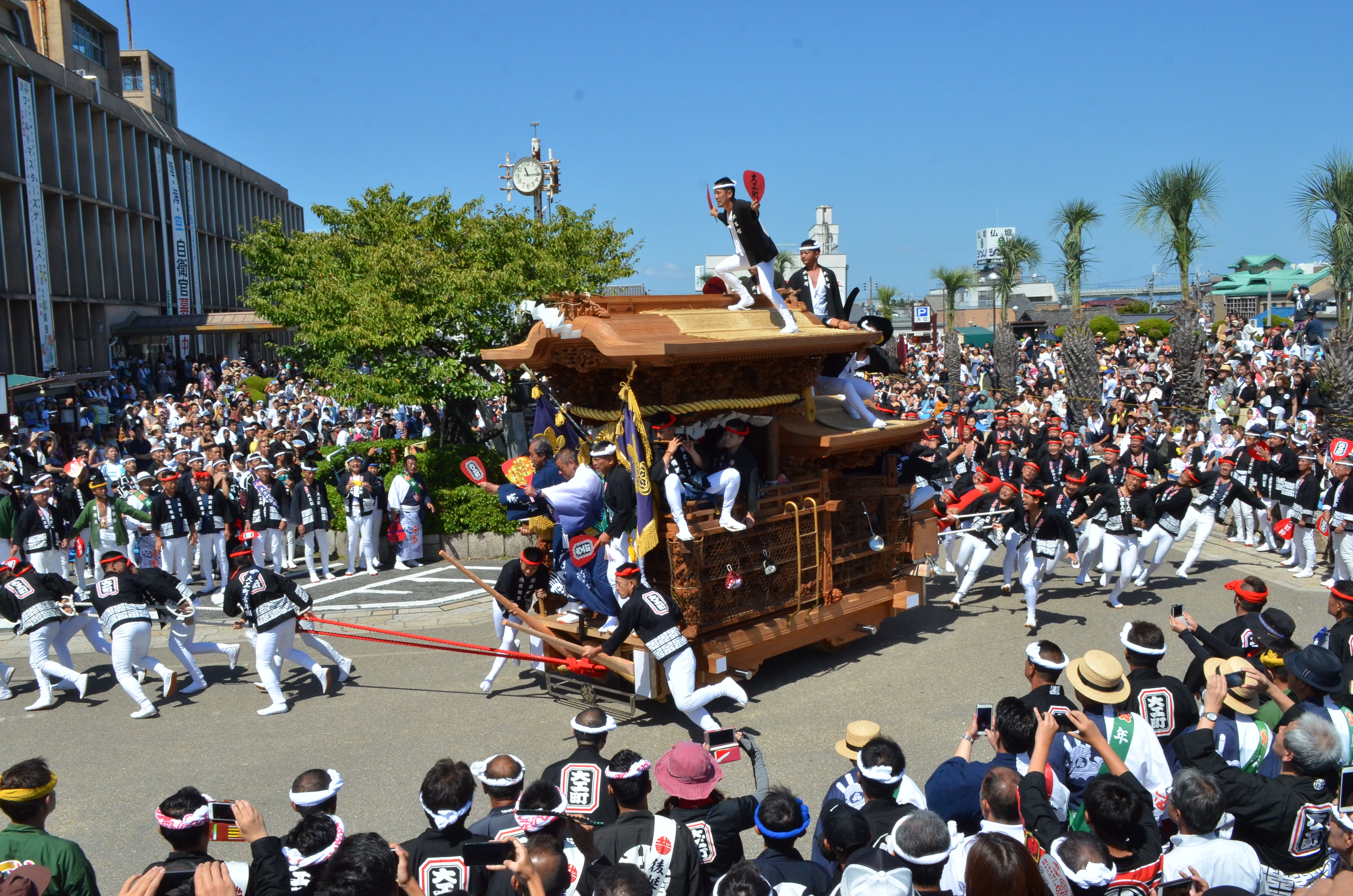September: Danjiri Festival
September 01, 2023

Danjiri Festival, Osaka(Google Maps)
写真提供:岸和田市
A small city with one of the most raucous festivals in Japan, Kishiwada is the place to go if you’re in search of a thrilling few days of adventure.
Located in the southern coastal suburbs of Osaka, Kishiwada is a castle town with a long history of festival traditions. Beginning in 1703, the Danjiri Festival was created to bring good luck from the rice goddess Inari, with the daimyo opening the castle doors to the public in order to celebrate. The festival features traditional wooden floats carried through the town, similar to many festivals across Japan. The major difference here, however, is the speed at which they are paraded through the streets. While a respectful march is commonplace elsewhere, in Kishiwada the pace is thrillingly fast. Local teams use ropes and levers to race the carts through the crowds, skidding around corners known as yarimawashi, all while carrying daring locals on the roofs.

Danjiri Festival, Osaka(Google Maps)
写真提供:岸和田市
While those watching may only snatch a glance of the passing danjiri, the floats are carefully crafted, with intricate decorative features. In fact, the respected carpenters are often seen riding atop their creations, with the bravest balanced precariously on the roof. Jumping from side to side as the carts turn on sharp corners, the riders also display their fan dancing skill to impress the crowds. Each year, the riders become more daring, and the crowds increase as word spreads about a festival with more adrenalin than most.
The festival is the heart of the local community, with between 400 to 1,000 people taking part and children learning to pull the floats from a young age. The city is best known for its September festival, which features 34 danjiri and has two parts taking place in Kishiwada and Haruki. There is also a larger but lesser known festival in October, however, with 47 danjiri seen between the smaller mountain towns. For those unable to visit during the events, the floats can be seen at the dedicated museum: Kishiwada Danjiri Kaikan. With immersive videos, real floats and atmospheric soundscapes, the museum takes you straight to the heart of the festival.

Kanto-daki
In the evenings, lanterns adorn the floats and they are pulled through the town by local children along with adults to help lighten the load. Bringing a little calm to the chaos, the parade is a chance to admire the floats and enjoy the community spirit, with many celebrating in the streets with drinks and festival food. Given its location in Osaka, one of the most popular options to try is okonomiyaki—a cabbage-filled pancake with a host of possible fillings, all doused in sweet, sticky sauce and mayonnaise as well as a dusting of aonori (dried seaweed powder) and katsuobushi (dried bonito flakes). Takoyaki, balls of batter stuffed with octopus and topped in a similar fashion are another must try, but for those looking for something more unusual, there’s the local dish of kanto-daki. A stew of egg, radish, fish cakes and beef tendon, it is a winter dish that hits the spot as the cooler evenings settle in, with the walnut covered rice cake, kurumi-mochi, ideal for a sweet treat afterwards. Given the festival originally hailed the goddess of rice, a little sake wouldn’t go amiss, with local breweries including Terada Shuzo and Isaka Shuzojo, who’s Miwafuku Junmai Daiginjo is especially sought after.
Offering thrills, skills and delicious local specialties, the castle town of Kishiwada is an unmissable stop on the festival tour of Japan. Whether you’re able to enjoy the high-speed race in the autumn or enjoy the museum’s displays, you’re sure to be amazed by the bravery of those flying through the city streets for years to come.
For more details, contact DMC Japan to discuss ideas, locations and rates.
Contact Us


